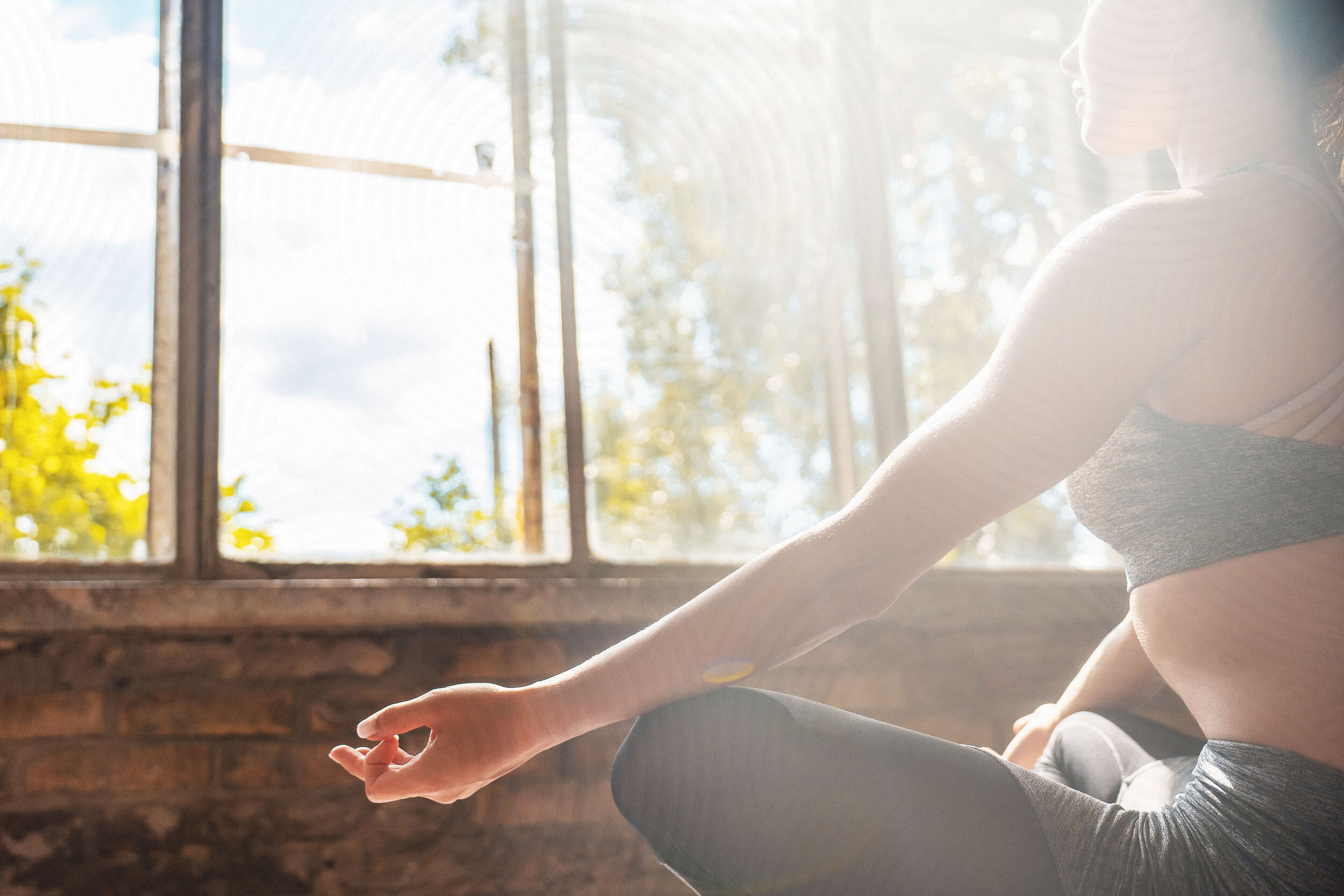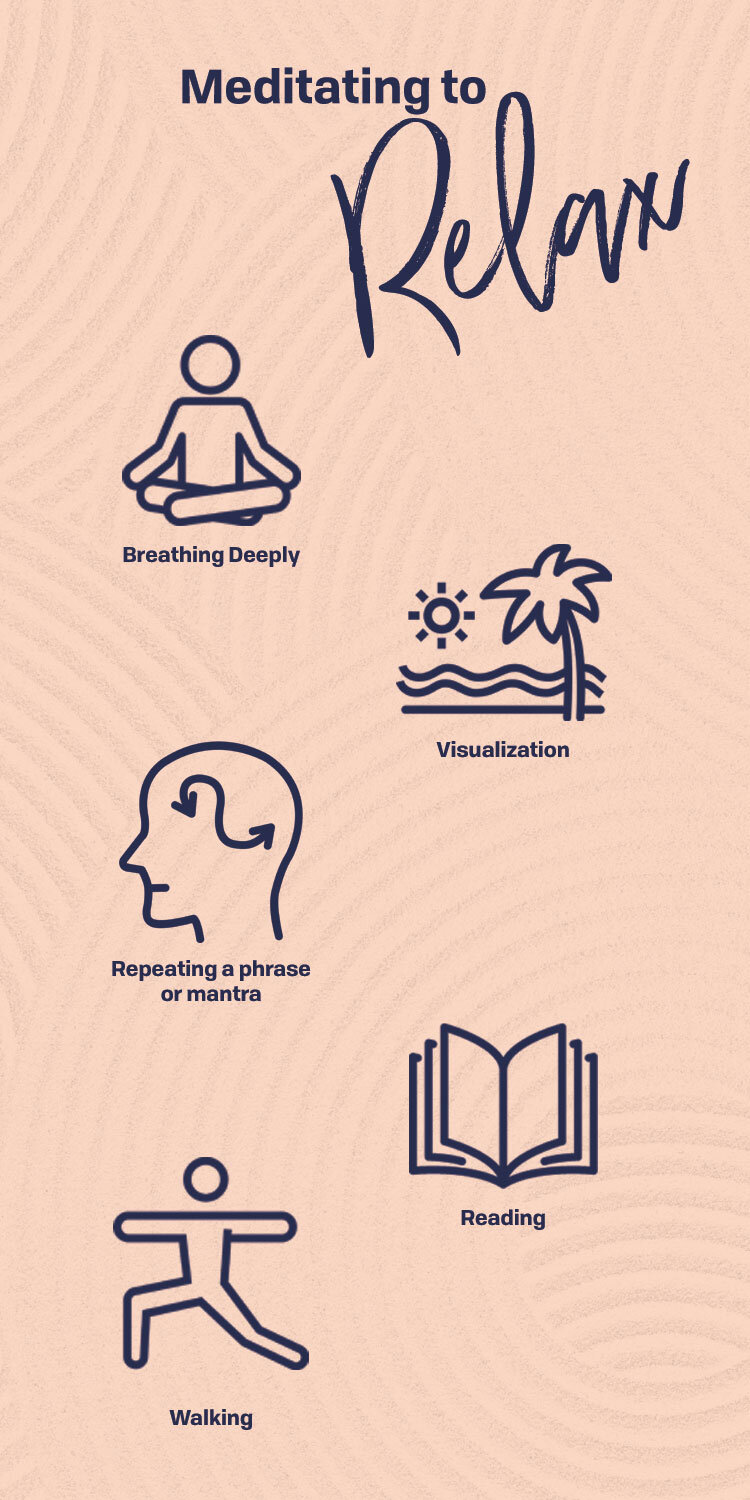How to Meditate to Relax Your Mind
“A busy mind accelerates the perceived passage of time. Buy more time by cultivating peace of mind.”
-Naval Ravikan
By: Shannon Sweeney
Do some days feel like you don’t have even a minute truly for yourself? You’re not alone — as we navigate this world of never-ending to-do lists and the desire to constantly do more, it’s normal to feel overwhelmed, anxious, or stressed.
This is where meditation can help. But why is meditation relaxing? When you feel like things are out of control and that you’re generally just overwhelmed, taking time to focus and breathe can help you relax. Taking deep, controlled breaths helps lower cortisol levels, the stress hormone that triggers our sense of stress and anxiety. So when you focus on breathing, your body is naturally able to relax and release tension — which can help you sleep better, too.
Below, we go through some of the health benefits of meditating and some tips on how to meditate to relax.
Health Benefits of Meditation
Slowed, controlled breathing naturally helps us relax by catalyzing our body’s parasympathetic nervous system — responsible for our rest and digestion when we’re relaxed, resting, or feeding. When we focus on slow, controlled breathing, we can lower our cortisone levels, lower our blood pressure, improve our heart rates, and release tension and tightness in our bodies.
A study in Psychoneuroendocrinology found that brief mindfulness meditation (25-minutes per day for three days) training reduced psychological stress and regulated the participants’ cortisol response, meaning it helped people regulate and respond to feelings of stress and anxiety.
How to Focus While Meditating
One of the biggest complaints I’ve heard about meditating is that people have trouble focusing or clearing their head — and that’s totally understandable! Especially when you’re looking at mediation as a way to relax. When we’re stressed it seems like our minds are racing with endless tasks or the weight of our problems. But when we feel most out of control, that’s often when meditation can be the most useful. But like anything, learning how to meditate for relaxation is a process, and you aren’t going to master it overnight.
As you learn how to meditate, here are some tips to follow:
Start by meditating for two minutes a day. When you begin meditating, start for just two minutes a day. When you do this, you’ll start training your brain to focus for small amounts of time on one thing. Do this for one week, and increase by another minute or two. Every week (or sooner if you feel you’re ready) slowly work your way up to 10 minutes a day.
Try guided meditation. If you’re having trouble concentrating, try an app like Simple Habit, Calm, or Head Space that will guide you through meditation.
Try meditation in the morning. As your body naturally wakes up, this is the perfect time to try meditation before you take on your day. In the morning, your brain is generally clear and rested, which means it can be positively influenced before the stress of the day creeps in.
Let your mind wander. A common misconception with meditation is that you have to completely clear your mind — which is nearly impossible. When you relax, your mind is naturally going to wander. As your mind wanders, it’s important to control your breathing and make sure you have enough control to block unwanted or stressful thoughts.
How to Meditate to Relax
The best part about meditating is that you can do it from wherever you are — at home, in your office, in your car — basically anywhere. Spending a few minutes meditating can completely change your mindset and outlook for the rest of your day, making you feel less tense and anxious.
There are multiple ways to meditate to relax, so the key here is finding what works best for your lifestyle. When you find something that helps you relax, build it into a daily routine — it doesn’t have to take up a huge portion of your day. Meditation can be as little as a few minutes, and even just a few minutes can completely change your day.
When you’re looking to relax, here are some tips:
Go to a quiet setting where you can fully be with yourself without distraction.
Sit or lay in a comfortable position where your muscles can lose tension (especially important if you sit at a desk because your neck and shoulders become tense).
Have an open attitude — let thoughts flow through you without judgment or overthinking.
Here are some ways to try meditating to relax:
Breathing Deeply. Maintaining a focus on full, cleansing breaths is one of the simplest ways to help your body physically and mentally relax. To practice deep breathing, breathe fully in through the nose, and exhale through your mouth. If you need help with how long to breathe, count to five when you inhale, and count to 5 when you exhale. Having consistent, focused breaths will help get your stress levels in check. You can also practice deep breathing through guided apps (see above) or through your smart watch (Fitbit, Apple Watch).
Walking. Physically step away from your office, your home, or wherever you are when you need a minute to yourself. Practicing meditation while you walk is a great way to get blood flowing throughout your body. To use this method, walk in a quiet area — in a park, on a trail — and slow your pace so you can focus on your legs and feet. As you move, focus on your stride and breathing.
Other tip: You can try other types of rhythmic exercise to help relax, too, like swimming, dancing, climbing, or rowing.Repeating a phrase or mantra. Find an inspirational word or phrase and repeat it to yourself — these can be religious or secular, whatever you’re comfortable with. Repeat a word or phrase as you meditate to help shut out your surroundings and help you relax. For instance, when I feel an anxiety attack, I repeat the word “strength” to myself as I breathe. Some ideas for inspiration:
“I am strong, I am enough”
“Keep pushing forward and leave the past behind”
“I deserve love and happiness”
Reading. Reading a poem, a religious text, or even a few minutes of a book you’re reading can help distract you from the outside world and whatever’s stressing you out. You can also listen to a book, too, if you’re driving or in another place where you can’t read.
Visualization. If you’re a self-described “visual person,” this type of relaxation meditation is for you. This type of mediation requires you to close your eyes and visualize a place that makes you feel at peace, whether that’s a beach, a forest, or wherever you feel happy. Focus on things like what you see, what you hear, what you smell, and what you feel. Stay here for a few minutes until you’re ready to open your eyes.
When you feel like life is becoming too stressful and you just need a few minutes to yourself, meditation can help your mind and body relax. Whether it’s using a guided app or walking on your lunch break, meditation will help you physically and mentally release stress and tension — allowing you to fully connect with your body and mind.
More Article You Might Like












Apps for yoga, diet tracking, and even period monitoring can help you keep tabs on what’s going on with your bod. So what are the best apps to get right now? We did a little searchy search and found the must-have apps for 2018. So far.